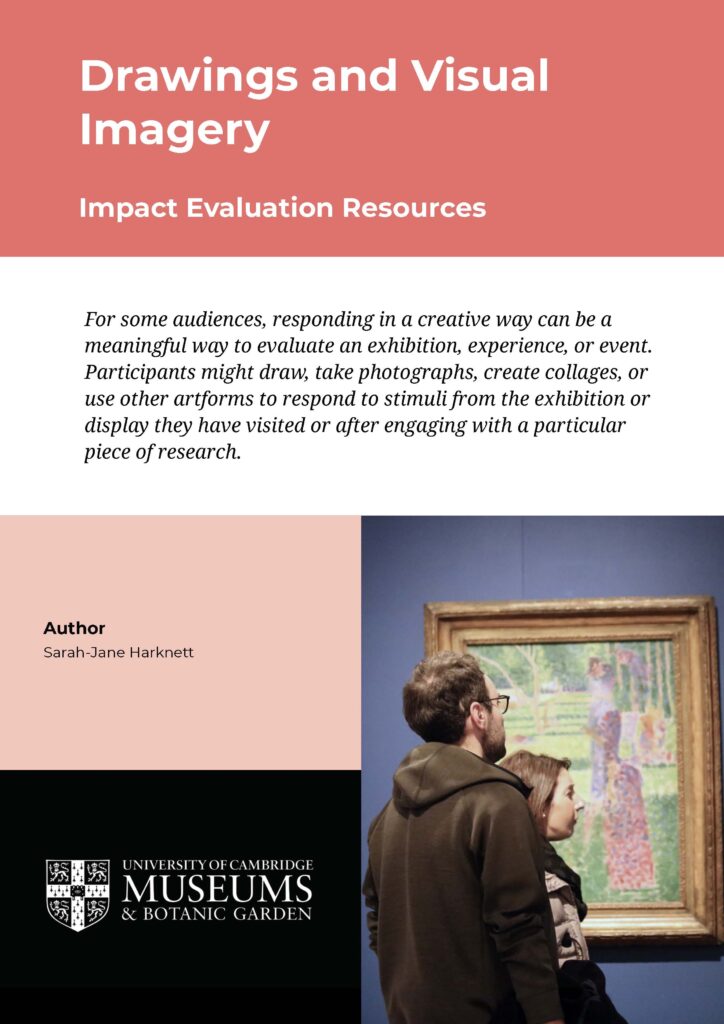Find out how to evaluate audiences through drawings and creative responses.
Surveys and questionnaires are not the only way to evaluate. Some audiences will find it easier to respond in a creative way, through drawings, taking photographs or other artistic methods.
Our Impact Evaluation Resource guides you through the whole process, from planning your evaluation through to what to do with the data. The full resource is available for download at the bottom of this page.
Drawings and creative responses can be a good way to evaluate exhibitions or events. Using these techniques can help audiences who might not be keen on writing, or perhaps learning a new creative skill is the thing you want to evaluate. You could use drawings to measure change before and after a visit or replace the questionnaire at the end of your event with a creative space. Time spent planning a creative evaluation is especially important. You need to make sure you get a good balance between a fun and creative activity while also achieving robust evaluation results. It’s very easy to get the balance wrong in either direction. You’ll need to make sure your instructions to participants are clear, and all facilitators are well briefed on what they are doing. If you are asking people to draw their response, it’s helpful to also ask them to label things, or add a sentence or two to describe their drawing. This can make the analysis a bit easier!
Once people have created their response, you will need to record it somehow. Are participants going to leave it with you? This helps the evaluator but can be frustrating for the person who has created a beautiful artwork and doesn’t get to keep it. When you come to the analysis, make sure you have left yourself plenty of time. With creative responses it is very tempting to collect a lot of data that is then hard to interpret. You could make a simple scoring system that you use to evaluate the creative responses, or you could look for repeated themes or items.
If you would like to learn more about carrying out your own evaluation study using drawings and other visual imagery, download our Impact Evaluation Resource, which includes information on how to do it, some basic ideas of what to do with the results, ethics, safety and security and a helpful list of further reading.
If you have any questions, or would like any support or guidance on your own evaluation projects, please feel free to get in touch: info@museums.cam.ac.uk

